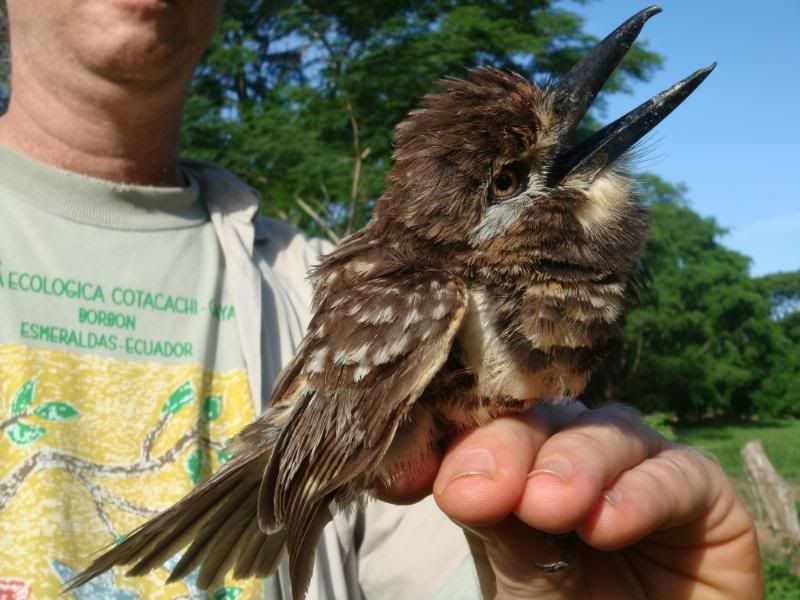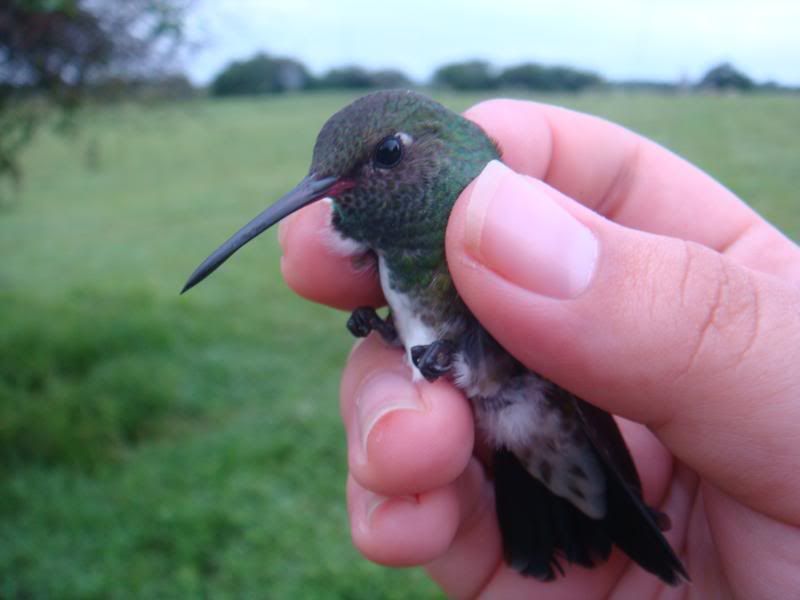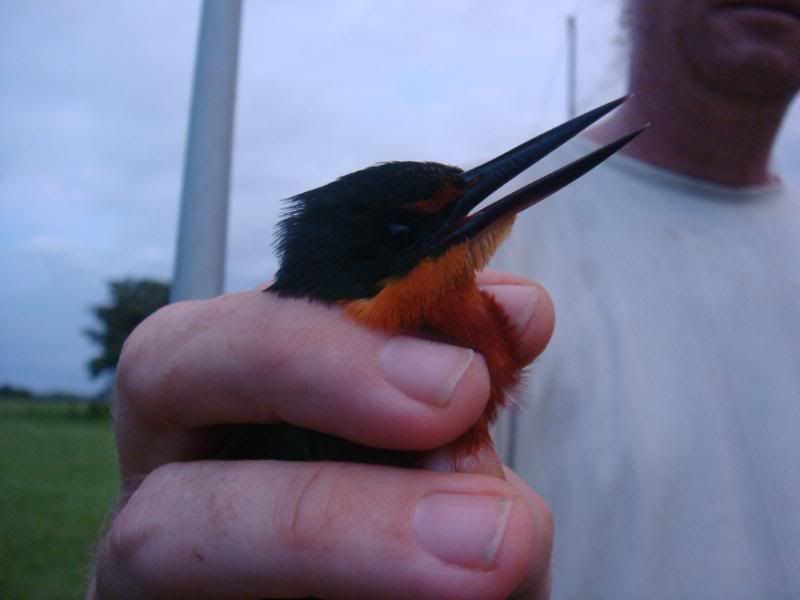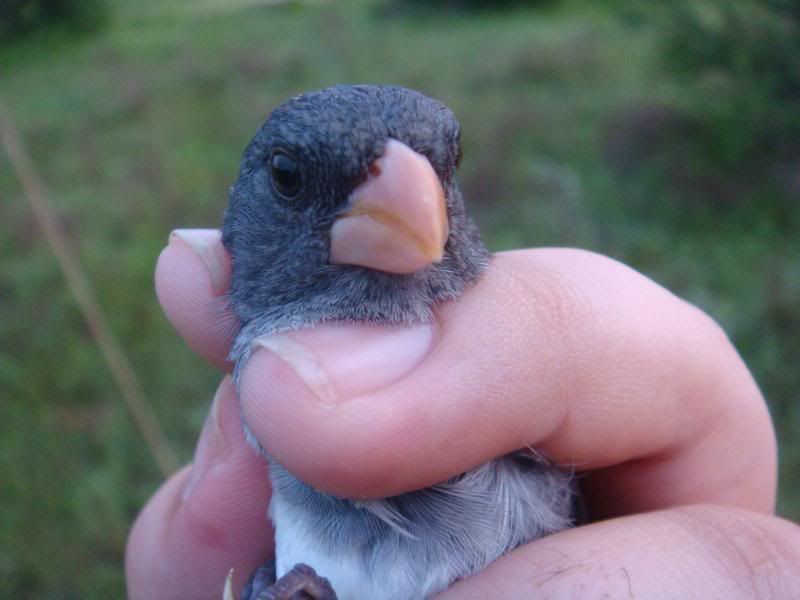Can you see the net? The birds didn't


Glittering-throated Emerald (Amazilia fimbriata)
Caught three in the predawn hours. Had to let em go fast so only this poor shot:

Saffron Finch (Sicalis flaveola)

Lesser Kiskadee (Philohydor lictor)



Blue-gray Tanager (Thraupis episcopus)
Only managed these shots before he chomped and escaped


Plain Thornbird (Phacellodomus inornatus)
They may be plain but they're a cool, iconic bird of the llanos. I'll have to do a separate post just on them.



Let's play a little game of guess-the-flycatcher?



Give up? This is a Southern Beardless-Tyrannulet (Camptostoma obsoletum). Hearing it sing before hitting the net helped a lot in identification.
My friend Rae Okawa, a Forpus fieldworker in the months before I arrived, also caught some really cool birds and graciously shared her photos:
Russet-throated Puffbird (Hypnelus ruficollis)

White-tipped Dove (Leptoptila verreauxi)

Glittering-throated Emerald (Amazilia fimbriata)


Pygmy Kingfisher (Chloroceryle aenea)

Bananaquit (Coereba flaveola)



And of course, we both caught many of these:
Green-rumped Parrotlet (Forpus passerinus)






Looks like 100% pure fun! But that Parrotlet bill . . . owe!
ReplyDeleteThat's a lot of birds. And I've learned they don't look good in hands.
ReplyDeleteMon@rch - agreed.
ReplyDeleteKoala - my photos aren't beautiful, but the birds are, and they were all released unharmed after these photos.
Great post! How's FL treating you?
ReplyDeleteFlorida's great! Although it seems the cold weather has caught up with me.
ReplyDeleteAmazing colors on those birds. And I was happy with my cedar waxwing shot.
ReplyDeleteRae's pictures are great, so are yours. What camera are you using? Your pics of the tropical birds are better than my birdbook pictures, they are drawn. I had no clue about the crown patch on the kiskadees. We have plenty on the island. I have a difficult time telling the difference between the Great Kiskadee and the Lesser Kiskadee and sometimes the BoatBilled Flycatcher. I have a Tyrannidae/flycatcher that hangs out outside my porch every evening, he even sits on a branch close by if I am very still. I have yet to identify him, it is difficult for me to be 100% sure of some of the species because the variances are so slight. He looks a bit like your SouthernBearded Tyrannulet.
ReplyDeleteGreat pics!
Thanks! All of my pictures and video come from my trusty Panasonic Lumix FZ-20. It's getting pretty beat up these days, so that may have to change sooner or later. If you get a picture of your unknown Tyrannid and let me know where you're located, I can try to help. What bird guide are you using? I don't have great pictures of the kiskadees for comparison but if I dig any up I'll get them posted.
ReplyDeleteSo, what do you do with these birds after this capture?
ReplyDeleteAs I mentioned at the top, all but the parrotlets are accidental captures that are photographed and quickly released. The parrotlets were banded, and then released.
ReplyDelete